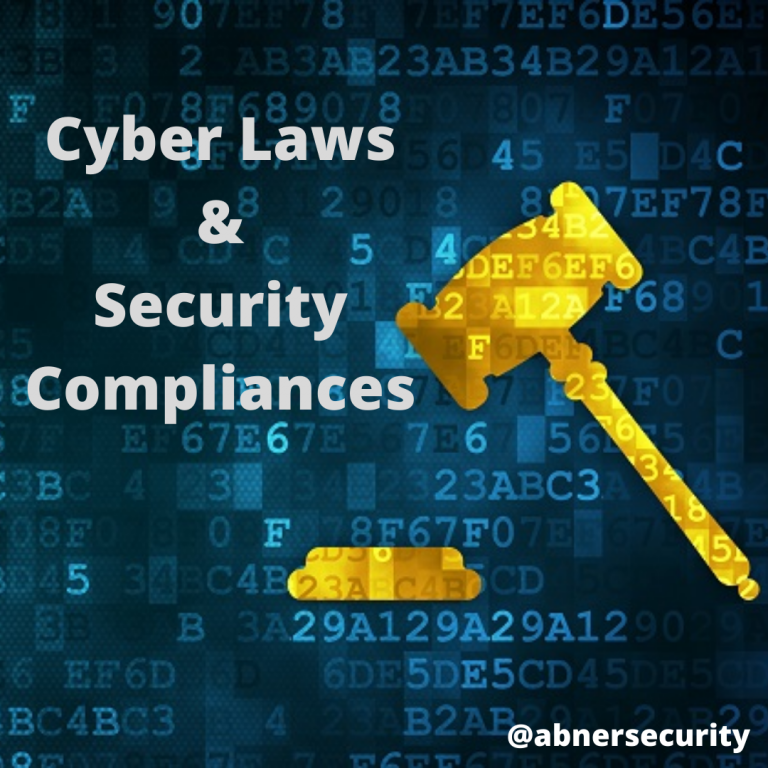Cyber laws are associated with establishing the rules and regulations governing the use of cyberspace in a country. Cyber laws, like any other law, are specific to a nation. Cyber laws define the legal framework of using the internet, computers, laptops, routers, and IT devices.
Cyber Laws and Security Compliances
With everything going all-techie; and growing interaction between people, gadgets, software, and technology-based services, an extensive world of cyberspace has evolved. Individuals have access to immense information regarding any and every field. They can store any kind of data (in various forms) and interact with technology as they wish. This kind of interaction is beneficial to a great extent but can also be misused. This is the premise of Cyber Crimes.
Cyber Crimes are defined as unlawful acts wherein:
The computer acts as a tool used to commit a criminal act like Cyber Terrorism, IPR violations, Credit card frauds, fund transfer frauds, and Pornography
Or the computer is a target of such criminal activities like Hacking, Virus/Worm attacks and DOS attack
Or a computer is both the means and the target for the same.
Cyber Laws have been formulated to keep a tab on such cyber crimes; to prevent such crimes from taking place, to minimize their occurrence, and to catch & punish the culprits of such acts of crime. These laws specify the procedures as well as technologies that could be used to provide security against unlawful cyber-attacks transmitted through the Internet, and a legal framework to implement these derived procedures.
Any crime related to or pertaining to the information systems could be classified as Cyber Crime. A very common example of cybercrime is that our social networking accounts, like Facebook or Instagram, being hacked. Other instances include various virus-based attacks, spoofing, cyberstalking, pornography, e-mail bombing, gambling (online), and crimes related to finances or intellectual properties.
1. Crimes Against People
These kinds of cybercrimes target individuals and affect them financially, mentally, or physically.
a) Cyber Stalking – It’s a kind of cyber-crime in which the attacker (being an anonymous person) harasses a victim using electronic media. It is an online equivalent of being stealthily followed around by a person. The victim could be stalked through emails, instant messages, social networking sites, or interactions that take place over various chat groups or websites.
Over half of young women in PH experience online harassment – global study
b) Harassment via E-mails – In this kind of cyber-attack, victims are harassed with letters or with pictures, audio or video-based attachments, sent via e-mails. This includes assaulting an individual through threats, obscene material, or spamming.
4 Clear Steps: How To Stop Email Spoofing | Mail Settings
c) Email Spoofing – This is one of the most common methods of cybercrimes wherein, the recipient sees a spoof of the source of a received message and not its actual origin
2. Crimes Against Property
With the advancement of technology and growth in cyberspace, trades related to the possession of the property are no longer limited within the same region or country. They have expanded to countries and continents. To manage such a vast international trade, paer=based management systems have turned obsolete, giving way to electronic management systems. Digitization of trade gives way to various methods of cybercrimes in this domain as well.
a) Intellectual Property Crimes – Software piracy, infraction of patents, copyrights, trademarks. official designs (like architectural blueprints) etc., come under this category of cybercrime.
b) Cyber Squatting – Cyber Squatting can be defined as the process of acquiring someone else’s property without their permission. In case you are using the domain mane of a popular brand with the intent of making a profit from their brand value. A common example is registering a look-alike domain of famous sites.
Eg. If there exists a website: www.cybersecurity.com one may register a domain www.cybersecurty.com to confuse the users.
c) Cyber Vandalism – Cyber vandalism is the act of vandalizing (destroying) computer infrastructure or information saved in them. Extracting login credentials from a system or erasing valuable information from hard drives are some of the acts performed by programs dedicated to vandalizing information systems. It also includes defacing websites and putting messages on them.
3. Crimes Against Government
A number of criminal (cyber-criminal) acts are practiced to harm the government of a nation or globally.
Some of them have been discussed below:
Cyber Terrorism: China’s New Weapon Against India – The Hitavada
a) Cyber Terrorism – Terror activities like denial of service attacks, attacks on sensor networks, and damaging Critical Information Infrastructure (CII) that happen over the internet fall under this category of cyber-attacks. Terrorists often interact with each other via e-mails that are either encrypted or secured with some kind of secret code.
Cyber Warfare a Key Element of Multi Domain Wars – Time to Push India – Air Power Asia
b) Cyber Warfare – The deliberate act of strategically targeting the information system of a nation, to gather military-based data (to be used against that particular nation to cause disruption or during wars), is termed as Cyber Warfare.
c) Pirated Software – Piracy is anyways a crucial problem for the protectors of information systems. When used against the government, the intensity of this issue increases substantially. There is several pirated software that has been created to damage and destroys confidential government records.
4. Crimes Targeting The Society
Any criminal activity occurring either virtually or in the real world (on a small or large scale), directly or indirectly harms the society of a nation. Some such acts of cybercrime have been discussed below.
Study Underscores Link between Human Trafficking and Online Abuse | Balkan Insight
a) Cyber Trafficking – Cyber Trafficking mixes cyberspace with all the crimes of trafficking. Whether it is trafficking in drugs, human beings, or artillery this kind of cybercrime gives the criminal world of trafficking digital wings to fly and allow it to pawn its network globally.
b) Child Pornography – While porn flicks, in general, are not much of a big deal creating or distributing pornographic content displaying sexual exploitation of underage children, is an unlawful act of crime.
c) Forgery – Cyber Forgery is an act of deceiving the victims by sending fake emails regarding online business transactions or posting to be a legitimate entity.




